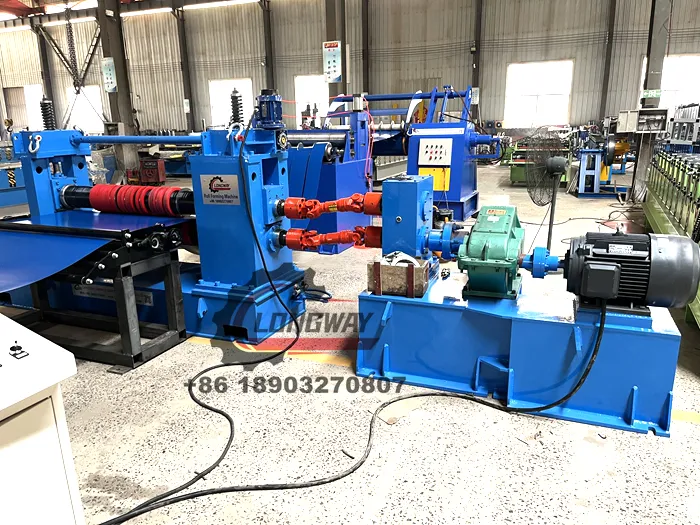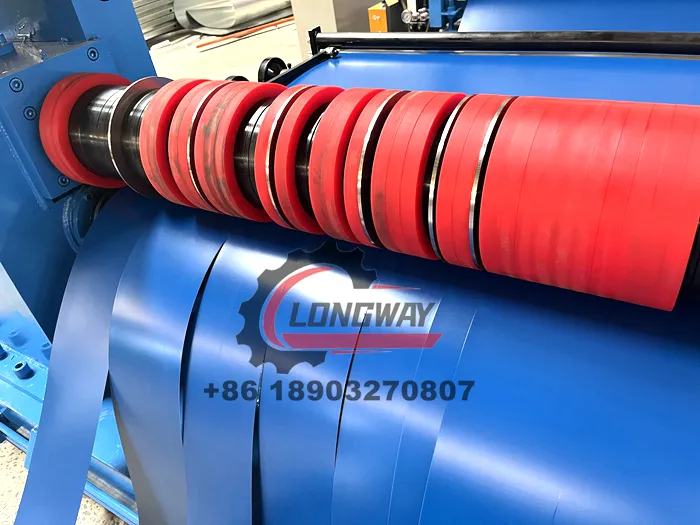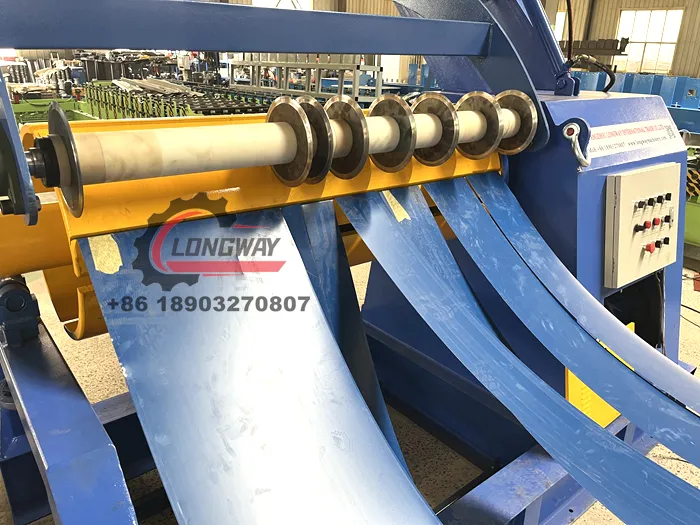The Role of Slitting Lines in Modern Metal Processing
In today’s fast-paced manufacturing world, precision and efficiency are essential in every step of production. This is particularly true in metal processing, where companies need to transform large coils of metal into usable sheets and strips for various industries. Slitting lines are integral to this process, providing the ability to cut large metal coils into narrower strips with high precision. This article will explore the role of slitting lines in modern metal processing, highlighting their importance, technological advancements, and the impact they have on the industry.

Understanding the Function of Slitting Lines
At its core, a coil slitting line is a specialized machine designed to cut large metal coils into narrower strips, also known as slit coils. These lines are typically used in the processing of materials such as steel, aluminum, copper, and other metals, which are often delivered in coil form. The slitting process involves feeding the coil into the machine, where it is uncoiled, cut into the desired widths by a set of rotating blades, and then rewound into smaller coils.
Steel coil slitting line are essential for industries that require specific dimensions of metal sheets or strips, including automotive manufacturing, construction, electrical, and consumer goods production. The precision and quality of the cuts are critical, as even the slightest deviation in dimensions can cause significant problems further down the production line, leading to defects, rework, or waste. Slitting lines, therefore, ensure that materials are prepared with the utmost accuracy, making them a cornerstone of modern metal processing.

Efficiency and Speed in Metal Processing About Зүсэх шугам
One of the primary advantages of slitting lines is the efficiency they bring to metal processing. Traditional methods of cutting metal, which may involve manual labor or slower mechanical processes, can be time-consuming and error-prone. Slitting lines, on the other hand, automate the cutting process, providing a high-speed solution that ensures consistent quality and precision.
The speed of slitting lines is particularly important in industries with tight production schedules. Automotive manufacturers, for example, rely on quick turnaround times for sheet metal processing to keep their assembly lines running smoothly. Slitting lines, with their ability to cut large volumes of metal quickly, contribute significantly to meeting these deadlines. As the demand for fast and efficient production grows, the slitting line remains a key tool in maintaining the pace of modern manufacturing.
Material Optimization and Cost Savings About Зүсэх шугам
Slitting lines play a crucial role in optimizing material usage, reducing waste, and improving cost efficiency. In industries where raw materials like steel and aluminum are expensive, maximizing the use of every coil is vital for maintaining profitability. By accurately cutting coils to the precise dimensions required for each application, slitting lines minimize material waste, ensuring that as much of the coil as possible is used in the final product.
Moreover, slitting lines reduce the need for additional processing steps or rework. In traditional metalworking, errors in cutting could result in material being discarded or needing to be reprocessed, which increases costs. With slitting lines, the accuracy of the cuts reduces the likelihood of such errors, leading to fewer defects, less scrap, and ultimately lower production costs. This cost-effective use of materials makes slitting lines an invaluable asset for manufacturers looking to improve their bottom line.

Flexibility in Material Processing About Зүсэх шугам
Slitting lines offer exceptional flexibility in processing a wide range of materials and thicknesses. While most commonly used for steel and aluminum, modern slitting lines can handle various other metals, including high-strength alloys and specialized materials used in aerospace or automotive applications. The ability to adjust the cutting speed, blade configuration, and tension settings allows manufacturers to work with diverse materials, from thin, delicate foils to thicker, more robust metal sheets.
This flexibility is especially beneficial in industries where customization is key. For example, automotive manufacturers often require precise cuts to meet the specifications of different vehicle models. Slitting lines can easily be adjusted to produce different widths, making them suitable for a variety of projects, whether they involve mass production or smaller custom runs.
Technological Advancements in Slitting Lines
Technological advancements have significantly enhanced the capabilities of slitting lines. Modern machines are equipped with sophisticated controls and automation systems that improve speed, accuracy, and safety. One such advancement is the integration of digital control systems, which allow for real-time adjustments to cutting parameters, ensuring optimal performance and reducing the likelihood of human error.
Incorporating automation and sensor technology has also improved the quality of cuts and overall machine efficiency. Automated systems can detect material defects, adjust cutting speeds, and optimize blade settings, reducing downtime and increasing throughput. These systems also facilitate predictive maintenance, helping operators identify potential issues before they lead to equipment failure or unplanned downtime.
Additionally, the incorporation of laser and plasma technologies into slitting lines has expanded their capabilities. These systems provide precise cutting options for materials that would otherwise be difficult to handle with traditional rotary blade systems, such as high-strength steels or exotic alloys. As a result, slitting lines continue to evolve to meet the needs of increasingly complex manufacturing processes.
Sustainability and Environmental Benefits of Зүсэх шугам
In an era of heightened environmental awareness, manufacturers are under pressure to adopt sustainable practices. Slitting lines contribute to sustainability by minimizing material waste and improving the overall efficiency of the production process. The ability to accurately cut coils into smaller, usable strips means that manufacturers can avoid unnecessary scrap, and the metal that is not used can often be recycled back into the system.
-
Corrugated iron roofing sheet making machine with CE, AutoМэдээNov.17, 2025
-
3mm Steel C U Channel Roll Forming Machine, Heavy DutyМэдээNov.17, 2025
-
Calamima Micro Ondulada corrugated roof sheet machine - CNCМэдээNov.17, 2025
-
Metal Roofing Roll Former for Sale Companies - Fast, PreciseМэдээNov.17, 2025
-
Drywall Steel L Angle Bar forming machine | Fast, PreciseМэдээNov.17, 2025
-
Corrugated Iron Roofing Sheet Making Machine, Fast & DurableМэдээNov.11, 2025
-
Corrugated Metal Roofing Machine | High-Speed, Precise, CEМэдээNov.11, 2025







